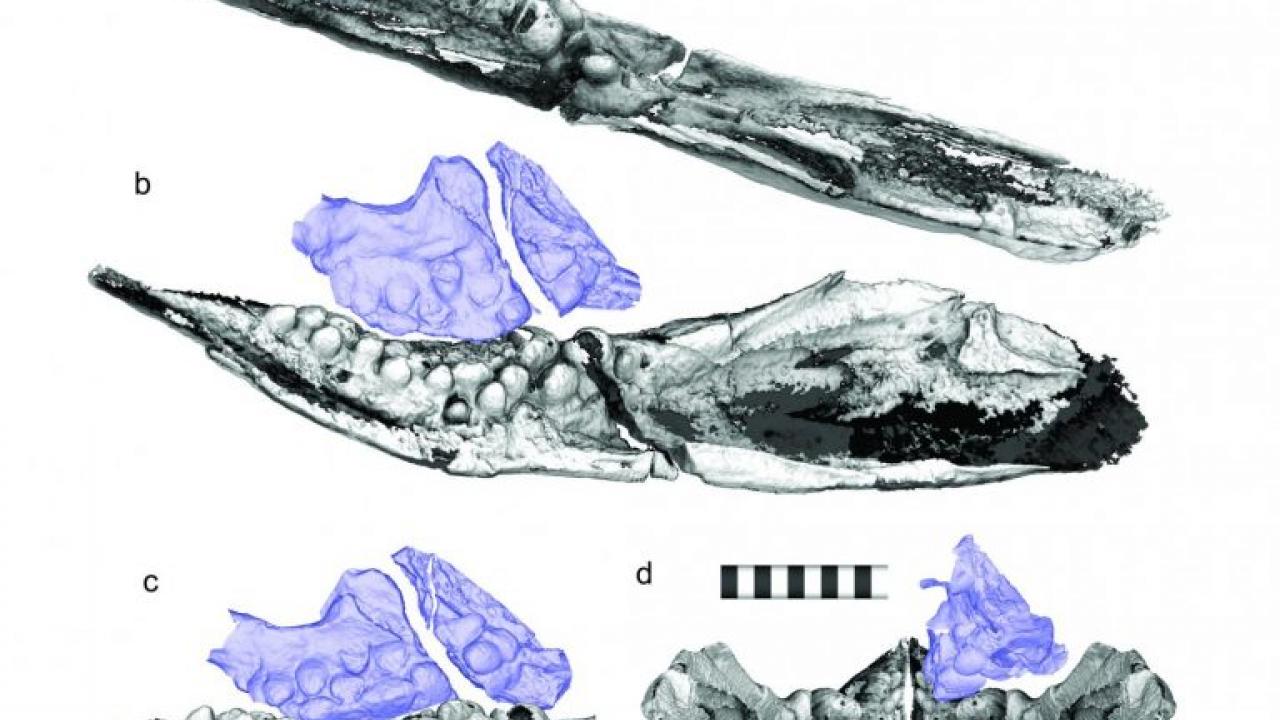
Earliest Ichthyosaur Munched on Shellfish
The ichthyosaurs were sleek, dolphin-like marine reptiles that roamed the oceans while dinosaurs ruled on land. But the earliest known member of the group was a short, seal-like animal that could likely pull itself onto land.
Now, scanning of that animal’s skull shows that it likely fed on hard-shelled animals such as shellfish and crabs. The appearance of similar teeth in other ichthyosaurs gives insight into how these animals were evolving in the wake of the mass extinction at the end of the Permian era, 250 million years ago.
The team led by Ryosuke Motani, professor in the UC Davis Department of Earth and Planetary Sciences, originally described the fossil Cartorhynchus lenticarpus in 2014. It was about a foot and half long, with a short snout, long flexible flippers and wrist bones that indicated it could probably move around on land rather like a seal.
Specialized teeth
The researchers at first thought that Cartorhynchus was a suction feeder because of its short, wide snout. But using computed tomography (CT) scanning, they could see three rows of pebble-like teeth in the animal’s lower jaw. The teeth appeared to be oriented inwards rather than up towards the upper jaw. The findings were published May 8 in the journal Scientific Reports.
These rounded teeth were in the back of the jaws, where our molars are, and were likely used to crush small hard-shelled invertebrates like snails and clam-like bivalves. Like a modern sea bream, the animal may have sucked shellfish into its mouth then used its teeth to crush them.
The researchers found that rounded teeth cropped up in several other ichthyosaur species, suggesting that the trait evolved independently more than once, rather than all round-toothed ichthyosaurs evolving from one common round-toothed ancestor. Meanwhile, many other early ichthyosaurs had pointed cone-shaped teeth.
— Andy Fell, UC Davis News and Media Relations, for the Egghead blog
